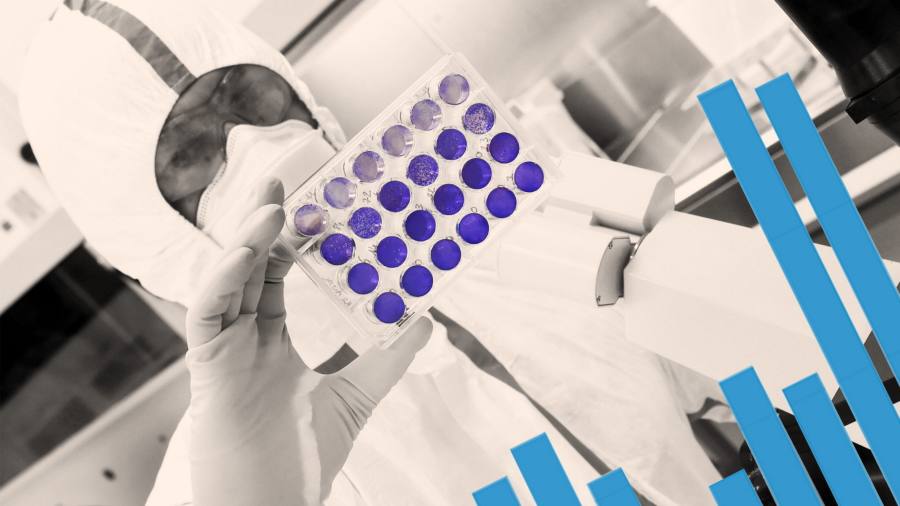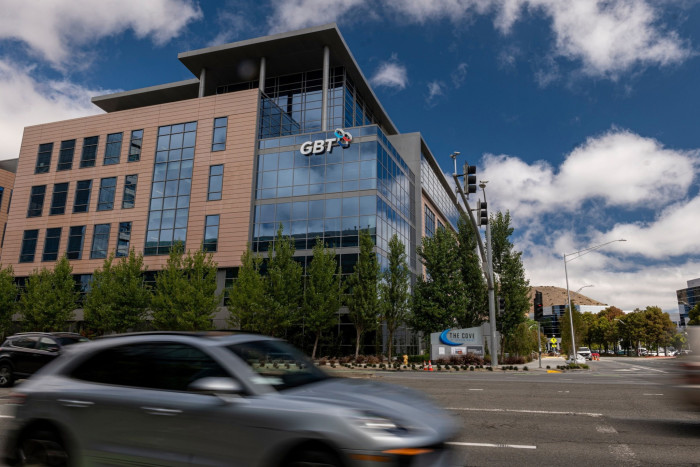
After spectacular fundraising success during the pandemic followed by a spectacular crash when ideas failed to bear fruit, investors are starting to return to the more promising parts of the listed biotech sector.
The Covid-19 generation of newly public biotechs has been struggling in the industry’s worst bear market since the 2000s. But after dire first and second quarters that hit biotech stocks indiscriminately, a gap is opening up between the more robust companies, which have begun to raise more money after positive trial data, and the rest.
Vincent Meunier, a managing director at European investment bank Bryan Garnier & Co, said the market already felt different from just two months ago. “Before the summer break, it’s true we had to postpone a lot of transactions. The market was simply not open, investors were really fed up and exhausted.”
But now, investors are noticing the opportunities offered by low valuations, he said. He just completed an oversubscribed €102.9mn follow-on fundraising for French vaccine maker Valneva, which is down 64 per cent so far this year.
“A couple of months ago, cheap was cheap but for good reasons. Now, cheap is appealing,” he said.
In 2000, the Nasdaq biotechnology index dropped almost 70 per cent over three years. This time, that index, which now includes larger biotechs, has fallen 28 per cent from its peak in early September last year, and the S&P XBI, of smaller companies, has fallen 41 per cent since last November’s high.
Some companies, usually those with new clinical data that show their product is on the right track, have been able to raise follow-on funds in the public market, with $5.2bn raised in the third quarter, more than the first and second quarters combined.
Michael Yee, an analyst at Jefferies, said there was an appetite to buy biotechs with positive data, though it is far harder to raise money if you have less certainty about your pipeline.
“If you do have a good result, there is the opportunity to finance, which is really important. It gives you a lifeline.”
But even for those companies, most of the funding is from existing investors, with one healthcare banker saying new shareholders often made up only about 40 per cent of a raise, compared with 60 or 70 per cent before the sell-off. Share offerings are now done quickly and quietly to avoid the impact of giant swings in the market, and investors want to do much more due diligence, he added.
Biotechs soared during the pandemic. Non-specialist investors and hedge funds piled in, pushing up valuations and funding large swaths of start-ups that had not even begun human trials.
Their subsequent retreat was a major factor in the fall in share prices, along with concerns about overvaluation, disappointing clinical results and US government plans to restrict some drug prices. Wider worries, including the war in Ukraine and an economic slowdown, made investors even more risk averse.
Now there are signs that some believe prices are close to turning a corner, with hedge funds stepping up investments since late summer.
Antoine Papiernik, chair of venture capital firm Sofinnova Partners, said the investment case was pretty clear. “We believe healthcare and life sciences will be a huge area for secular industry. People don’t want to die. It’s pretty basic.”
But for most companies not lucky enough to report stellar data this year, fundraising remains daunting. Yet they still need to fund trials that can cost hundreds of millions of dollars to create drugs they hope will save lives and make fortunes.
“There are increasingly haves and have nots,” said one large pharmaceutical company executive.
The pain in the public markets is also putting pressure on private companies. Their venture capital backers have become more cautious, knowing they might have to offer support for longer, and aware of scrutiny from their own investors.
According to life science-focused investment bank Torreya, the size of the average private fundraising deal fell 44 per cent between the first and third quarters, while several venture capitalists report companies taking valuation cuts of 30 to 40 per cent.
Geraldine O’Keeffe, a partner at venture capital firm EQT Life Sciences, said most investors were assuming the biotech IPO market would not reopen until next year, so other funding options will be important.
“Not all companies will survive. I think where there are good assets they should hopefully find a home, but there are tough times ahead,” she said.
If biotechs cannot raise money, investors are pushing cuts in spending, and raising the idea of merging with other companies, or reverse merging into public companies with cash and a listing, but only failed drugs, according to people familiar with the market.
Biotechs are usually bought out by big pharmaceutical companies who have the financial muscle to fund large phase 3 clinical trials and commercialise successful treatments. The conditions appear ripe for an M&A boom: big drugmakers are sitting on almost $300bn of cash and many, including Merck and Bristol-Myers-Squibb, need to refill their pipelines because of major patent expiries in the second half of the decade.

There have been some deals in recent months. Pfizer bought Biohaven for $11.6bn, and Global Blood Therapeutics for $5.4bn, while in the summer, Merck was in talks over a $40bn bid for oncology company Seagen, according to people close to the details.
But there is less activity than some in the market expected, given the sharp falls in valuations. Two healthcare bankers said one reason is that sellers are asking for too much. “There’s still a valuation gap between sellers and buyers. And as long as this gap remains, it is difficult to agree on terms,” he said. “[Big Pharma groups] are looking more, trying to get deals done, but deals are not happening.”
Nooman Haque, managing director of life sciences and healthcare for Emea at Silicon Valley Bank, believes M&A will increase but pharma companies are taking time to sort through target companies, perhaps because it does not look like the market will recover any time soon.
“They have the cash, they certainly have the motivation with patent cliffs and expiries coming, and so many companies want to talk to them,” he said.
Instead of being bought at the bottom, many biotechs prefer partnerships with Big Pharma. Papiernik said the terms were now better for Big Pharma but as long as companies do not partner away their only asset, partnership deals are a “really good way to bridge that gap”.
The pharma executive said he had done deals in recent months where he felt biotech boards were more ready to engage because of the lack of alternatives. But he added that whether for M&A or partnerships, Big Pharma tends to be drawn to the same targets. “There’s a few companies that are very competitive. And a lot where no one wants them,” he said.
There are other fundraising options, such as private equity, venture debt — loans for young businesses — and specialist royalty deals.
Private equity, which used to focus on healthcare and pharma services companies, has become more interested in biotechs with approved drugs or those in late-stage development. Now firms see opportunities in consolidation and creating royalty streams to finance drugs in return for a slice of future sales.
Late last year, Christian Itin, chief executive of Autlous, which is developing advanced cancer therapies, foresaw that rising interest rates would prompt investors to move out of biotech.
“We were looking at the outlook and it was quite clear what was coming, way before Mr Putin decided to invade Ukraine, which obviously made the whole thing a lot worse,” he said.
Concluding that he could “not cost cut his way to an approval”, he signed a deal worth up to $250mn with Blackstone Life Sciences, which employs specialist advisers, including the former chief executive of drugmaker Sanofi, and has a $4.6bn flagship fund. Blackstone invested $100mn in Autolus stock and $150mn in product financing to get its leukaemia treatment ready to launch.
Allan Marchington, head of life sciences at private equity group Intermediate Capital Group, predicted there would be lots of deals in the next six months as biotechs that have held off raising money find they need funds.
“It is a great time to invest. It’s the sale of the century. You just have to get the right deal and structure,” he said.
Additional reporting by Nicholas Megaw in New York